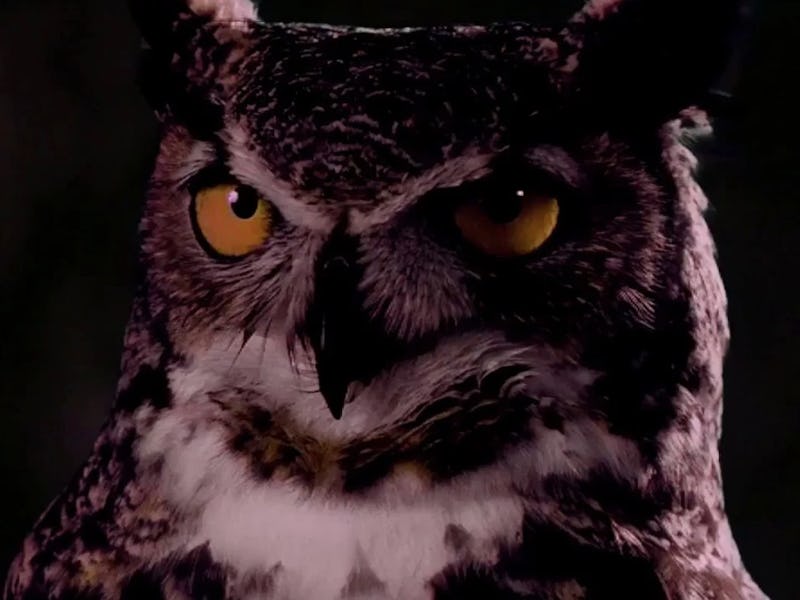Why Are Owls So Scary? A Folklore Historian Explains the Ancient Reasons
Stop wondering why they scare the hoot out of people at night.

The iconic slasher movie Halloween doesn’t waste any time, as a six-year-old Michael Myers kills his sister in the very first scene. But even before the act of violence, suspense has been established as soon as we see the Myers house — and hear the hoot of an owl.
Owls have managed to become a universal symbol for spookiness. According to Adrienne Mayor, a folklore historian at Stanford University, history has not been kind to these creatures of the night.
“They’ve been associated with witches, taken as a bad omen,” Mayor told Inverse. “Just the fact that you don’t know where it is, but you hear this terrifying sound. That’s pretty scary when you think that humans (once) lived in the dark.”
Owls are distinctly known for their piercing stare, heads that turn 270 degrees, and nocturnal lives. People in the Middle Ages associated demons with darkness, Mayor says, while owls filled the night with their “hoots and shrieks.”
Being night-dwellers, owls fit in nicely with the celebration of Halloween, which itself is based in part on All Hallows’ Eve, when the ghosts of dead people were thought to wander the streets at night.
But is there also something specific about an owl’s hoot that makes us feel so unsettled? For one thing, it’s the only sound they seem to make — their flying is so quiet and stealth that researchers have studied them for ways to reduce the noise of planes and wind turbines. The hoot is often the only sign people will have that an owl is near, which can make their covert presence all the more scary, says Karla Bloem, executive director of the International Owl Center in Houston.
In fact, a hoot is not the only noise owls make, Bloem tells Inverse. Other species of owls have calls that come off more like a high-pitched trill or harsh shriek.
“Some owls do have some really weird vocalizations that would scare most normal humans if they didn’t know what was making the noise,” Bloem says. “This makes them more mysterious, since people rarely encounter them so (they) aren’t familiar with them.”
Owls can make incredibly varying sounds, as seen in this video from Cornell University’s Lab of Ornithology:
It stands to reason that such a shrill noise is the perfect sonic accessory for putting a horror movie watcher or a haunted house attendee even more on edge. The dark is scary for a reason: It teases the threat of encounters with the unknown and the unseen.
This velvet worm ain’t messing around! Check out this video about one of the fiercest predators on Earth.